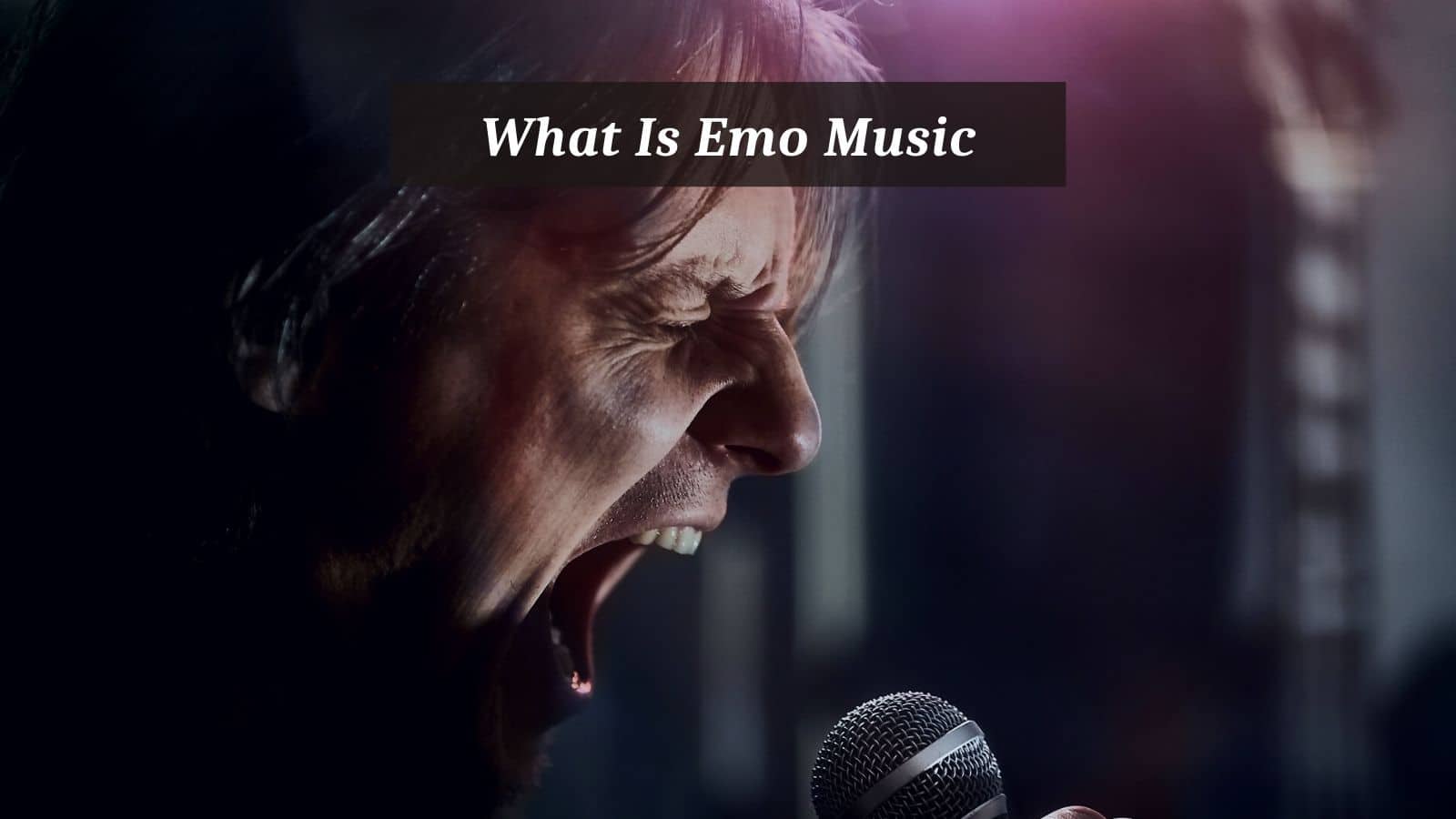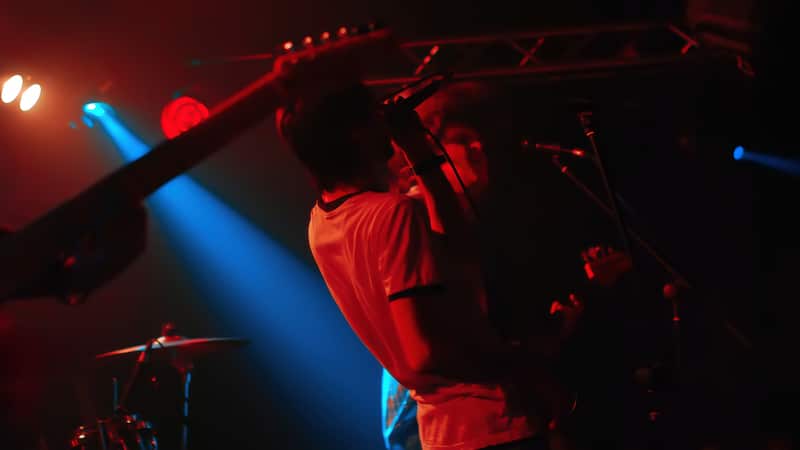
Emo is a portmanteau of emotional and hardcore. The genre is by its portrayal of heavy emotional themes that focus on the individual’s inner world and felt experiences.
Emo music is regarded as a subgenre of alternative rock, punk rock, and indie rock. Emo music developed out of the post-hardcore band stalls into a subgenre that stands on its own allowing individuals to express their feelings.
What Is Emo Music
Where Did Emo Music Begin?
Emo shot its first roots in Washington, D.C., during the Revolution Summer movement in the mid-1980s—musicians were trying to break away from the now-established post-hardcore band sound and scene.
One of the first bands to do so was the rock band Rites of Spring (e.g., End on End, 1985); their lyrics focused on hostility and heavily emotional subjects such as pain, loss, and failed relationships.
As the 1990s came along, emo music’s second wave hit the west coast spreading to the Midwest. The honest display of suffering but also sentimentality resonated with young teens and young adults of the time.
Bands such as Jawbreaker (e.g., Unfun, 1990), Sunny Day Real Estate (e.g., Diary, 1992), and Weezer (e.g., Pinkerton, 1996) were prominent during the second wave.
During the third wave of the 2000s, emo music took on a more radio-friendly sound but also lost its hardcore influence. Suddenly, emo became mainstream through the success of bands like Fall Out Boy, My Chemical Romance, and Jimmy Eat World (we will look at these bands later).
The 2010s saw emo music going underground, bands breaking up due to exhaustion, or bands moving into other genres (and subgenera).
The underground emo revival bands from the 2010s also started exploring emo’s older roots—perhaps in response to the modernized power-pop sound that came to dominate emo music.
Emo Derivative Styles
Emo music sounds like a mixed mix of alternative rock, goth, and grunge. There are also some different sounding versions, such as,
- Emo pop-punk is lighter and more radio-friendly and is one of the most popular emo derivatives. Think upbeat songs with sad lyrics with soaring vocals. My Chemical Romance is one of the leading bands in this derivative version. Paramore’s early works heard in their album, All We Know is Falling, led by Hayley Williams, also display these characteristics.
- Screamo is the aggressive member of the emo music family that features aggressively sung and, sometimes, screamed lyrics. Bands include Senses Fail (Still Searching, 2006) and The Used (Lies for the Liars, 2004), to name two examples.
- Emo rap is a fusion of emo lyrics and hip-hop beats—lyrics deal with mental health issues, heartbreak, and isolation. Some notable artists include Lil Peep (e.g., Come Over When You’re Sober, 2017), Lil Tracy (e.g., XOXO, 2017), and Kid Cudi (e.g., Man on the Moon, The End of the Day, 2017).
Characterizing Emo Music
Although the world of emo music can be broad, as seen above in the derivative styles, there are a few commonalities also present,
- Melodies and lyrics are charged with emotional rawness and turmoil, dealing with feelings of worry, anxiety, dread, and heartbreak. (Here’s a tongue-in-the-cheek guide to determining your inner feelings when listening to emo music).
- Coupled with raw emotions, emo music may sometimes sound dissonant. There is an element of roughness to the recordings, relaying and eliciting feelings of depression, disturbance, or general unsettledness.
- Beneath the surface of emo music, there is also an underlying tenderness that offsets the song’s emotionally charged lyrics because the artist is trying to share an emotional truth wrapped up in their pain or anger.
Examples of Emo Music and Bands
Let us look at some bands that have made emo music what it is today.
- My Chemical Romance
We would be amiss if we did not mention these brilliant guys. The band hailed from New Jersey and was formed shortly after Gerard Way witnessed the World Trade Center towers fall on September 11, 2001. Some of the biggest and most famous hits include,
Helena (Three Cheers for Sweet Revenge, 2004)
Welcome to the Black Parade (The Black Parade, 2006)
Famous Last Words (The Black Parade, 2006)
- Saves the Day
This band is from Princeton, New Jersey, and was formed in 1997. As the band grew in popularity, the band’s lineup changed throughout the years. Some of their more well-known songs include,
Stay What You Are (Stay What You Are, 2001)
Deciding (Can’t Slow Down, 1998)
In Reverie (In Reverie, 2003)
- Panic! At The Disco
Many consider them an emo-pop band. The band started in 2004 in Las Vegas, Nevada. Their rise to success is partly a combination of frontman Brendan Urie’s soaring vocals, virtuosic guitar riffs, and piano, all thrown into the mix.
Some consider this band the poster child of emo music, and their hits include,
I Write Sins Not Tragedies (A Fever You Can’t Sweat Out, 2005)
Nine in the Afternoon (Pretty. Odd, 2008)
The Ballad of Mona Lisa (Virtues & Vices, 2011)
- Jimmy Eat World
In 1993 in Mesa, Arizona, Jim Adkins and drummer Zach Lind joined Mitch Porter (a bassist) and guitarist Tom Linton to make music. This collaboration resulted in Jimmy Eat World. Some hits include,
Splat Out of Luck (Jimmy Eat World, 1994)
Sweetness (Sweetness, 2002)
Something Loud (Something Loud, 2022)
- American Football
American Football, sometimes also stylized as american football or americ anfootball, had a relatively short career spanning 1997 to 2000. The band hails from Urbana, Illinois. Some of the more popular songs include,
Stay Home (American Football, 1999)
Uncomfortably Numb, featuring Hayley Williams (from Paramore) (American Football, 2019)
Conclusion
Lyrics lie at the heart of emo music and are used to express the individual soul rather than political dissent, anger, and unhappiness which punk is known for.
Emo started as an underground scene in Washington, D.C., but quickly spread its wings giving many individuals music to voice their inner turmoil and feelings.
Further Reading and Listening
There are many more bands for you to discover and listen to when you follow this link—happy listening!


